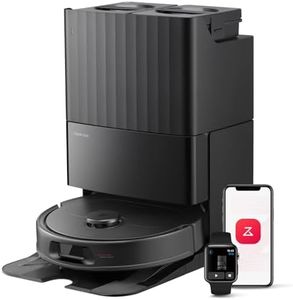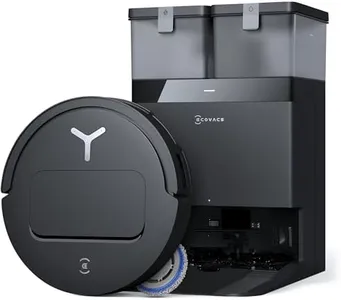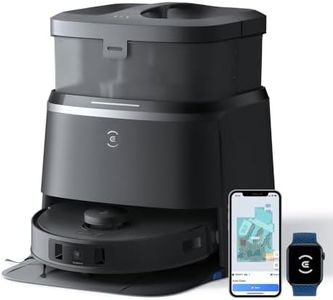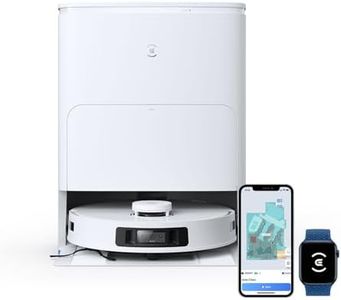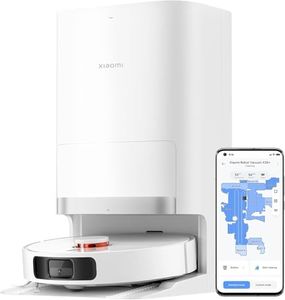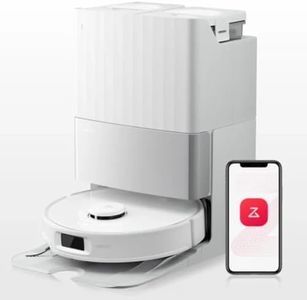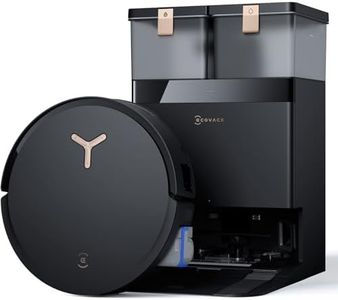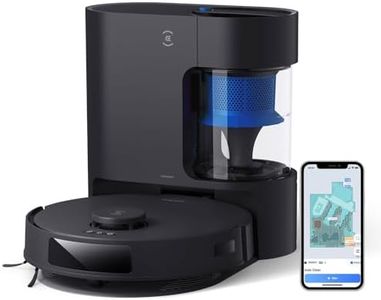We Use CookiesWe use cookies to enhance the security, performance,
functionality and for analytical and promotional activities. By continuing to browse this site you
are agreeing to our privacy policy
10 Best Robot Vacuums For Hardwood Floors
From leading brands and best sellers available on the web.Buying Guide for the Best Robot Vacuums For Hardwood Floors
Choosing a robot vacuum for hardwood floors can make cleaning much easier and save you a lot of time. The right choice depends on your specific needs, the size and layout of your living space, as well as any special features you want. To get the best fit, you'll want to look at key specifications that affect cleaning performance, navigation, and maintenance. Keep in mind that not all robot vacuums are created equal—some are better suited for hard surfaces like wood, while others excel on carpets or in complex layouts. By understanding these important specs, you'll be able to make an informed decision that keeps your hardwood floors spotless.Suction PowerSuction power refers to how strongly the vacuum can pull in dirt, dust, and debris. This is important for hardwood floors because you want to effectively remove small particles without scratching the surface. Suction power is often measured in Pascals (Pa). Lower suction (less than 1000Pa) is usually enough for bare wood floors and light dust; mid-range (1000-2000Pa) handles everyday debris and pet hair; higher suction (above 2000Pa) might be more than you need unless your floors get very dirty or have deep crevices. To pick the right level, consider how much foot traffic your floors get and if you have pets—choose a vacuum with moderate suction for most homes, unless your situation is unique.
Brush Type and DesignThe type of brush underneath the vacuum affects both cleaning efficiency and the care of your wood floors. There are typically soft roller brushes, bristle brushes, or rubber rollers. For hardwood, soft rollers or rubberized brushes are best because they won't scratch and pick up fine dust effectively. Bristle brushes can be rougher and may cause tiny marks over time. If you have delicate or easily scratched wood, prioritize soft or rubber brushes. If you have occasional area rugs, a hybrid or switchable brush system might be preferable.
Navigation SystemNavigation systems help robot vacuums find their way around your home. Simpler models use random path navigation and may miss spots or take longer; mid-range models use gyroscopes or sensors for more methodical cleaning patterns, and advanced models use lasers or cameras to create detailed maps and clean more efficiently. For open hardwood areas, basic navigation may suffice, but if you have a complicated layout, furniture, or want faster, more thorough cleaning, look for advanced navigation. Your lifestyle and how cluttered your floors are should guide this choice.
Dustbin CapacityDustbin capacity indicates how much dirt the robot can store before it needs to be emptied. Small bins (below 0.3 liters) fill up quickly and are good for smaller apartments or quick cleaning; medium bins (0.3 to 0.6 liters) suit most homes with regular cleaning needs; large bins (above 0.6 liters) are helpful if you want to empty less often, especially in bigger spaces or with lots of pet hair. Pick based on the size of your vacuuming area and how often you want to deal with the dustbin.
Height and SizeThe height and overall size of the robot determine whether it can get under furniture like couches and beds. Slimmer models (under 3 inches tall) are better for reaching tight spots, while taller robots may get stuck more often. For homes with low-profile furniture or lots of nooks, look for a compact and slim vacuum. Measure your furniture clearance before deciding to make sure your new helper fits where you need it.
Battery Life and RuntimeBattery life tells you how long the vacuum can clean on a single charge. Short runtimes (under 60 minutes) are fine for small homes or single rooms; mid-range models (60-120 minutes) suit most average-sized homes; long battery life (over 120 minutes) is ideal for large open areas or multi-room cleaning. If you want your vacuum to clean the whole floor in one go, make sure the runtime matches your home's size. Look for automatic recharge and resume features if you have a bigger area.
Smart Features and App ControlSmart features allow you to control the vacuum via a smartphone app, voice assistant, or schedule cleaning. Simple models may just have manual controls or basic scheduling, while smarter vacuums let you set cleaning zones, track maps, get maintenance alerts, and more. If you prefer hands-off operation or want to customize cleaning routines, look for robust app support. Otherwise, basic scheduling may be all you need.

